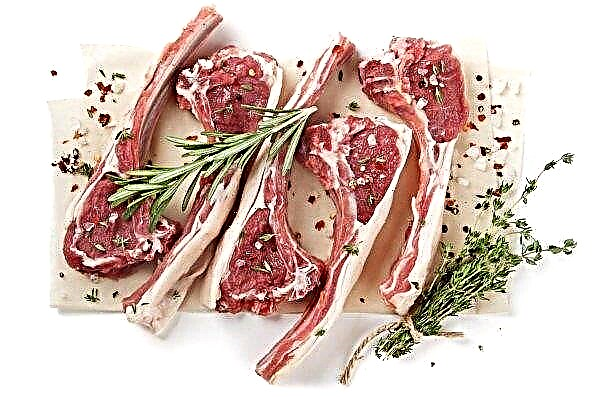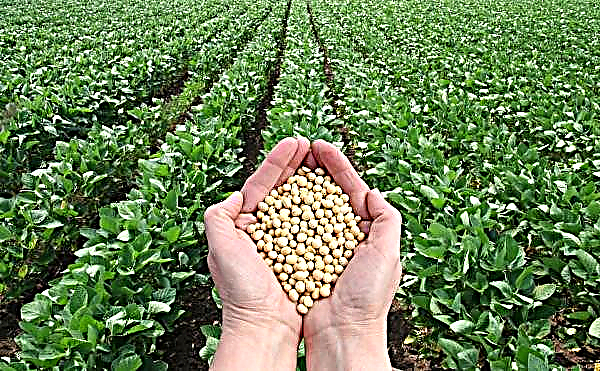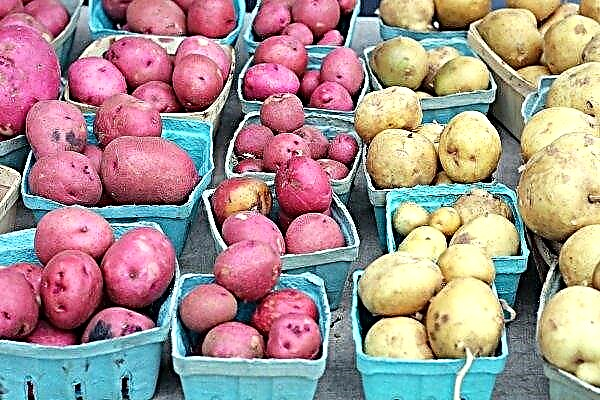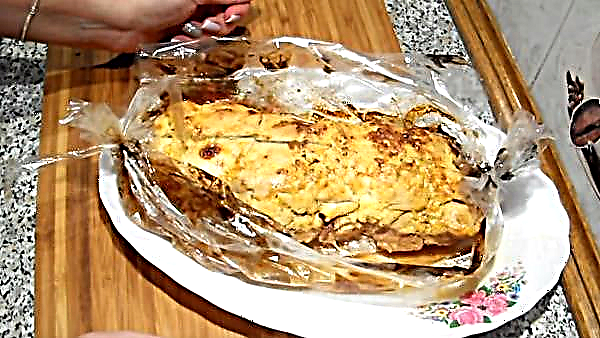Unripe melon, tasting like raw potatoes, becomes a considerable disappointment for the person who acquired it. But this can be avoided if you can choose the right ripe melons or bring the unripe to ripeness at home, which will be discussed in the article.
Why the melon is not ripe
Rainy and cool summers, lack of sunny days and heat before the onset of cold weather become the main reason that melon pumpkins do not reach a ripe state, and they have to be collected unripe. This is especially typical for climatic conditions of the middle lane.
However, often the gourds themselves deliberately collect and send unripe melon pumpkins to consumers, so that they better move the carriage and matured already on the way or at points of sale.
Did you know? Scientists still can not decide whether the melon is a vegetable, fruit or berry. An approximately equal number of signs indicates that the melon is a vegetable or berry, and there is little evidence that this plant is a fruit.
How to determine the degree of ripeness of melon
Meanwhile, it is not difficult to determine whether the pumpkin has matured to condition. And the main assistant in this is the smell. Around a fully ripe pumpkin, honey or flower aromas with a spicy hue are sure to hover. And the absence of a pleasant smell is guaranteed to indicate the ripeness of the fetus.

In addition, the ripeness level of this product can be determined by:
- the stalk, which should be dried and easily detachable from the fruit, while the ripe stalk has a green stalk;
- by the muffled sound that a ripe product makes when patted by the palm of your hand;
- according to the even and uniform state of the peel, when it comes to plain fruits.
The process of ripening melon at home
Owners of sites where, due to weather conditions, did not have time to ripen the melon fruit, they have to decide whether they will reach maturity, whether the harvest will ripen, if they lie down in the torn form of the house, and what to do, where to put the pumpkins so that they can mature in good quality when they lie down time in suitable conditions.
The task is facilitated by the fact that melons, like most gourds, can be stored in torn form for up to six months. This time is more than enough for ripening pumpkins, but for this it is necessary to make some efforts.Important! Frankly green, which did not have time to gain any ripeness of the fruit, are completely unsuitable for ripening.
It is best to answer questions about whether it ripens, ripens, whether it melts not on melons, but indoors, and whether it can fully ripen in it, late-ripening varieties answer.

They are not only capable of ripening outside the melon, but they also acquire additional taste qualities that are just missing pumpkins. But at the same time, you need to clearly know how to do this, how to ripen the fruits as efficiently as possible.
Did you know? A quarter of all the melons consumed on the planet are provided by China. On its melons every year a huge amount of this product is grown - 8 million tons.
Experts recommend:
- for ripening, select only intact melon fruits;
- Do not remove the stalks from them in order to avoid the beginning of the process of decay in this part of the pumpkin;
- for 1 week (and late-ripening varieties - 2 weeks), spread the fruits in a dry and well-ventilated place, while avoiding the contact of pumpkins with each other;
- flip pumpkins every 4 days;
- if there are few fruits, then they can be dosed in nets or canvas bags, hanging in a dry, cool and darkened room;
- you can also use wooden cages, lining their bottom with straw, on which the fruits are located, I do not touch each other.
Important! The quality of its pulp can tell the best about the ripeness of a pumpkin, however, this method is not suitable when buying, since there is a strict prohibition on selling cut melons.
How to choose a ripe melon
In order not to make a mistake in choosing a ripe product in the store, in the melon, you need to follow the advice of specialists, paying attention to:
- the color of the peel, green shades on which directly indicate the immaturity of the fetus, except when the green tones on the peel are due to varietal characteristics;
- excessive density of the melon surface, which also signals the immaturity of the pumpkin;
- the presence of a pronounced aroma, not characteristic of unripe fruits;
- the degree of dryness of the stalk, at which the drier it is, the more mature the melon;
- softness of the opposite end of the fetus, which indicates the maturity of the pumpkin.

The acquisition of unripe (but not green!) Melons is not a big problem, since the vast majority of varieties of this culture are capable of ripening in a ripped form. Therefore, the answer to the question whether melon fruits ripen at home is most often positive.












